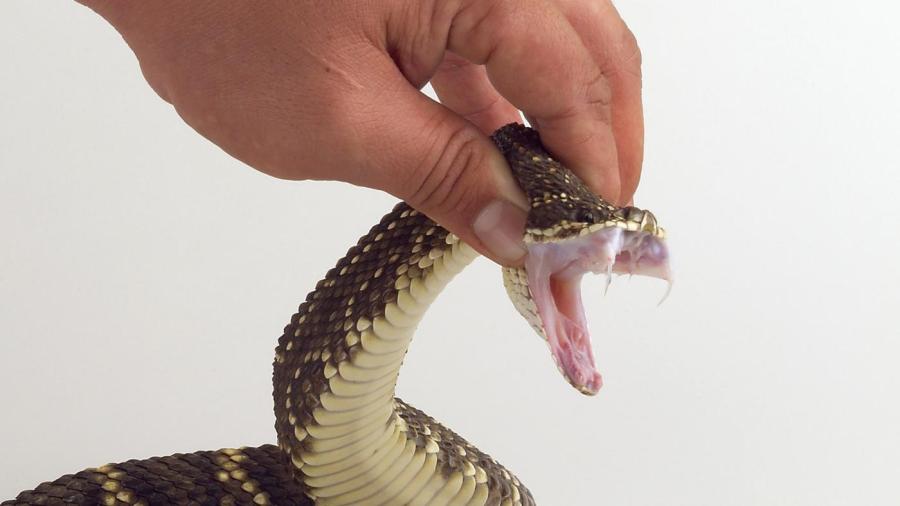How Do Snakes Protect Themselves?

Snakes use a variety of techniques and adaptations to defend themselves, including camouflage or fleeing from predators, as well as bluffing, biting and envenoming animals that threaten them. Most snakes seek to remain undetected by threatening animals and flee upon detection. However, snakes that are unable to escape may engage in a variety of defensive displays or deliver possible life-threatening bites.
The world holds nearly 3,500 snake species and each displays a unique combination of defensive mechanisms and survival strategies. Most rely on camouflage as a first line of defense. Some snakes, such as copperheads of the United States and gaboon vipers of Africa camouflage so well that they are virtually invisible among the leaf litter of the forest. Others are green to match the vegetation in which they reside. Still others live underground most of their lives, usually attaining dark, earth-tone colored scales.
Some snakes are equipped with great speed that they use to escape their enemies. Many of these species are colored black so they can achieve elevated body temperatures that help these ectothermic animals to crawl their fastest. Other snakes do not attempt to flee, instead relying on bluffs and bites to protect themselves.
Many venomous snakes, such as cobras and rattlesnakes, have bold behaviors that warn potential predators of their dangerous bite. However, many harmless snakes mimic such behaviors to protect themselves, even though their bite is not venomous.





